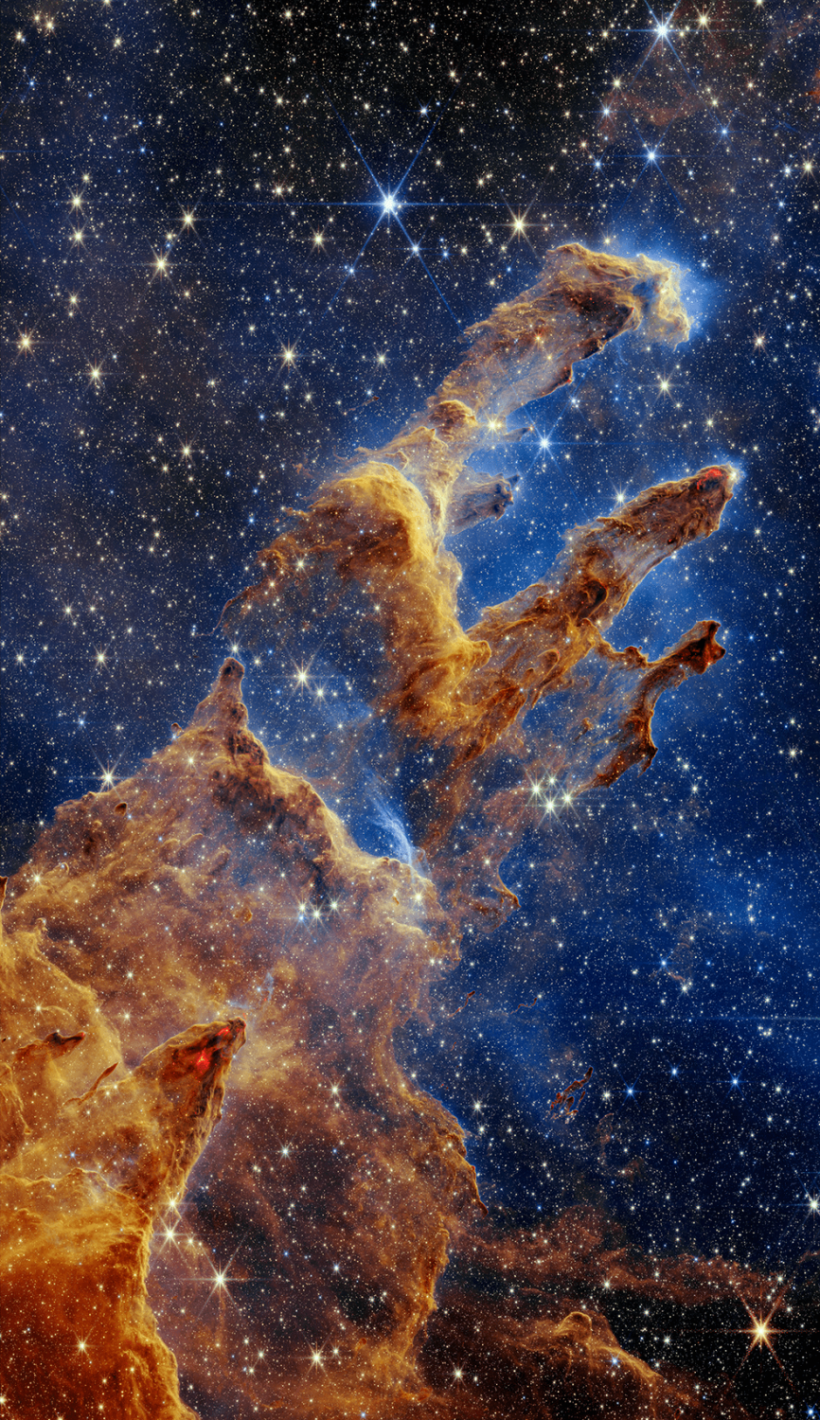NASA said the James Webb Space Telescope photographed the giant pillars of gas and dust packed with stars known as the Pillars of Creation.
Al Jazeera said the vast columns of gold, copper, and brown standing amid the massive Eagle Nebula, 6,500 light years from Earth, have been captured in the first image by the giant telescope earlier this week.
NASA Found Pillars of Creation Again Through James Webb Space Telescope
NASA stated on its website that the James Webb telescope has returned to a prominent location that the Hubble had photographed in the mid-1990s while it was still in its early space missions. A rock formation resembles towering pillars in the Pillars of Creation area and structures that mimic beautiful great mountains.
A rock formation in space appears to be a permeable concentration of gas and dust, as seen in The Pillars of Creation.

The Pillars of Creation are set off in a kaleidoscope of color in NASA’s James Webb Space Telescope’s near-infrared-light view. The pillars look like arches and spires rising out of a desert landscape but are filled with semi-transparent gas, dust, and ever-changing. This region is where young stars are forming – or have barely burst from their dusty cocoons as they continue to form.
ALSO READ: James Webb Space Telescope Reveals Hundreds of New Stars In The Iconic Pillar of Creation
The finding made by JWST will further knowledge of the amount of dust and gas present in the area and stars and how they develop.
NASA said that the Hubble telescope initially recorded this sight in 1995 on a separate website. It has already witnessed the marvel of space that has perplexed many due to its stony appearance and buildup of gas and dust.
JWST observed the region in 3D, with a mountainous appearance in the area of the cosmos where it is located, focusing on a new study for astronomers and researchers to discover more about its existence.
How JWST Found The Pillars of Creation
The Webb telescope gave scientists a closer look at the area by seeing through some dusty plumes and revealing other young stars that burn brilliant red. This was made possible by its Near-Infrared Camera, also known as NIRCam, CNN reported
Astronomers have visited the scene multiple times since Hubble captured the region's initial photograph in the 1990s. For instance, the ESA William Herschel Telescope also obtained an image of the peculiar star formation region, and in 2014 Hubble produced its follow-up image. According to ESA, every new piece of equipment that focuses on the area offers researchers fresh information.
NASA, ESA, and the Canadian Space Agency jointly manage Webb. Launched in December, the $10 billion space observatory has enough fuel to take ground-breaking pictures of the universe for approximately 20 years.
The space observatory's large, powerful mirror and infrared light technology can find faint, faraway galaxies that would otherwise be undetectable, and Webb has the potential to improve our knowledge of the universe's beginnings.
The observatory's capacity to disclose hitherto unknown facets of the universe, such as star birth veiled in dust, has been underlined by some of Webb's initial photographs, which have been appearing since July.
Although the telescope has captured photos of Mars, Jupiter, and Neptune, scientists also use it to highlight our solar system.
RELATED ARTICLE: NASA Shares Latest Image of Tarantula Nebula Captured by James Webb Telescope
Check out more news and information on Space in Science Times.














